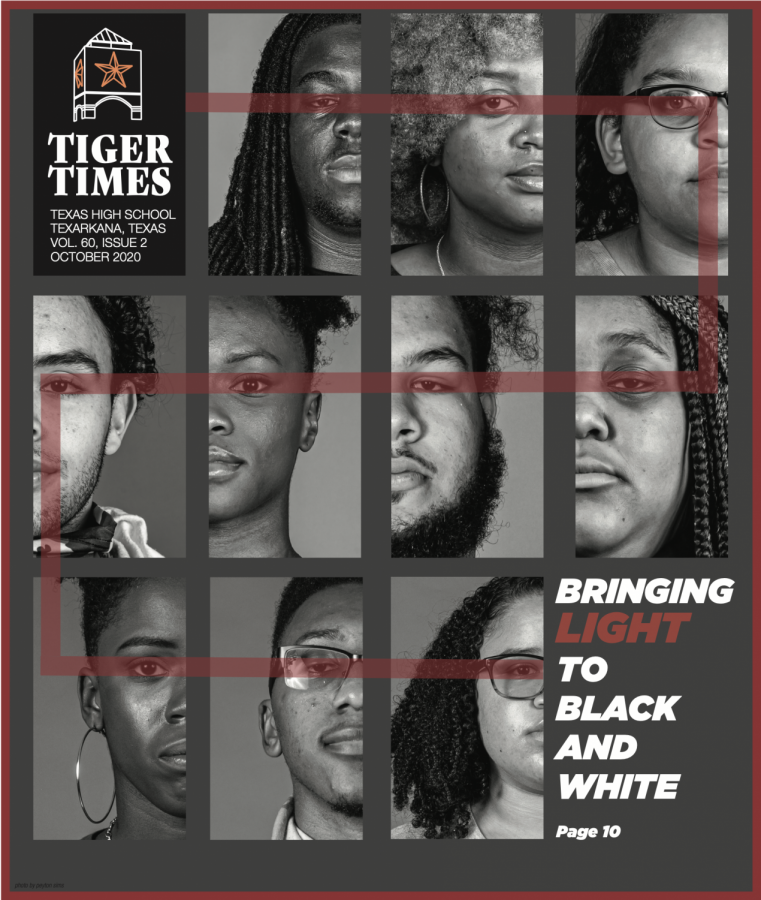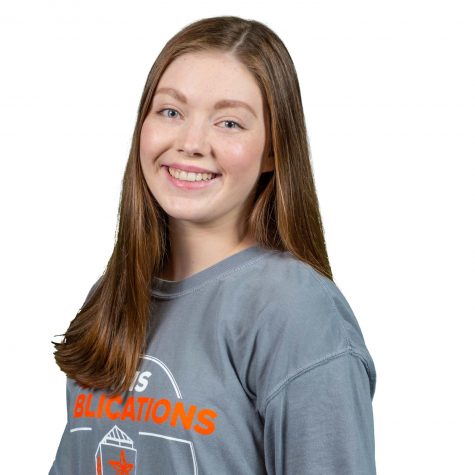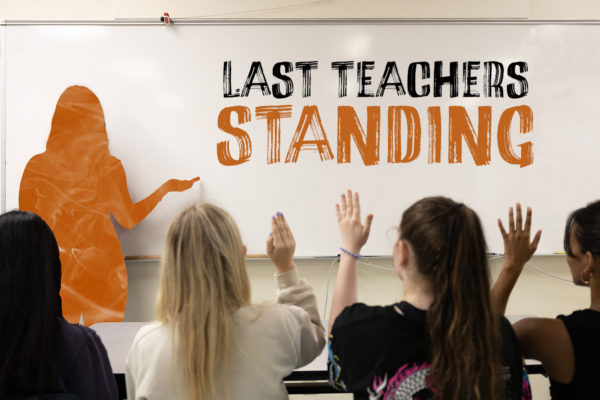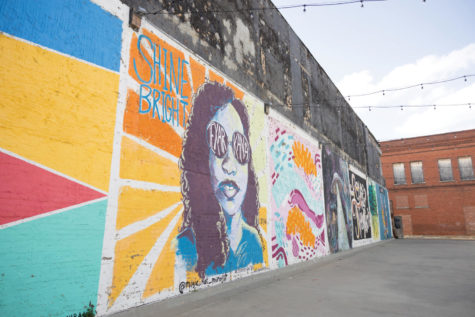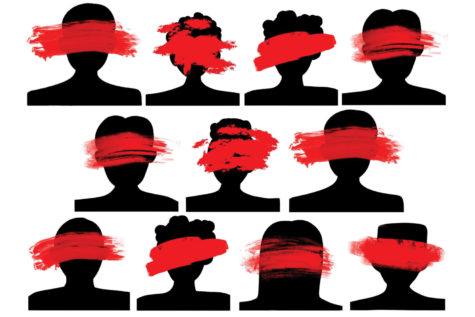Where do we begin?
All students need voice in educational environment
photo illustration
March 3, 2021
It’s not like it wasn’t always there. It sits in the back of our minds, waiting to be addressed, like a disease that’s yet to be diagnosed. The issue is not a physical being. It is a concept that goes beyond surface-level problems, looming over us day by day. We see it in the media, in Hollywood, in the workplace, even in the school environment. It is the institutional practice embedded in society. Systemic racism.
Systemic racism has been in place for generation after generation, sometimes confronted, but relatively pushed under the radar, unacknowledged. But in light of recent events involving police brutality, schools are having to make a decision on how to combat these issues, if they choose to at all.
“It’s not like it just became necessary. It’s not like situations just started happening that needed for these conversations to take place,” Principal Carla Dupree said. “This is something that people have felt for a long time but now [they] have a voice. The conversations need to happen for us to grow as a school, as a community and as a nation.”
This feeling of separation can begin in the classes that students take. Higher weighted courses, such as Advanced Placement and dual credit, seem to have a higher percentage of white students compared to students of color.
In 2018, out of the 686 African American students at Texas High, only 8% decided to take AP classes, and only 36.8 % took dual credit courses in comparison to the 33% of white students in AP classes and 68.9% in DC. These students opt out of these classes for a variety of reasons, including the lack of friends in the courses and the judgment that comes from participating.
“Maybe sometimes I [felt pressure not to join advanced classes],” senior Luz Cordova said. “I felt left out. [It was] not welcoming in there. It was mainly because I was the only Hispanic in there; it made me feel weird.”
REACH teacher Christie Alcorn said that in order for schools to combat systemic racism, they would have to initiate hard conversations.
“It begins with students feeling accepted and safe, and feeling like they matter [and] that they’re not targeted,” Alcorn said. “Kids see things in the cafeteria where it appears that it’s segregated and that discipline is only geared toward a particular group of minority students. Those students already had that stigmatism that ‘people are watching us, that we’re being targeted, they’re only looking at us and not this group, or we can’t be in this class because it’s a class or a club organization that only accepts Caucasian students.’”
By having hard conversations, Alcorn said the school could move toward a more inclusive environment.
“It starts with educating our students that they are welcome and accepted everywhere and even building relationships with those students produces an environment where they feel comfortable,” Alcorn said. “I think a lot of times they feel uncomfortable when they don’t feel welcome in those environments.”
Dupree has taken note of ways the school can improve in regards to inclusivity and diversity. The AP Ambassadors program was created to increase the percentage of students of color in advanced courses, which has been showing gains in the last few years.
Dupree said outreach is key to having classes and clubs that mirror the school’s demographics.
“AP Ambassadors has been amazing,” Dupree said. “That’s something that I was very active with my first year on campus and then Mrs. Raney took it over and has since done an amazing job,” Dupree said. “One of the things we’ve done to try to build our AP and DC [enrollment] numbers is getting to kiddos young. And so we have all ethnicities in AP Ambassadors, and they’ve done outreach going to different elementary campuses.”
Participation in campus organizations is also an area where more diversity is needed since club membership doesn’t mirror the school’s demographics. Student Council sponsor Susan Waldrep said it isn’t necessarily ethnicity that prevents students from joining clubs but the social group where students see themselves.
“A lot of times they see Student Council as the cheerleaders, the drill team, the football players. It’s a certain group,” Waldrep said. “It doesn’t really matter what color or what religion, but it matters more what group they’re coming from.”
As with many other organizations, the key to increasing diversity is recruitment, she said.
“We have made great strides in the last few years. We have purposely done a lot of going to different people and saying, ‘You know, you should come join us,’” Waldrep said. “As advisers, we have tried to go out and talk to people.”
It is also up to student leaders to encourage participation in these activities.
“Three or four days before leadership forms were due, I said, ‘OK, we don’t have representation in different areas. Korie [Hamilton] and Fezeka [Barnes] started texting kids and trying to get them to apply,” Waldrep said. “They got about 20 people to apply there at the very end so they could get in and get their voice heard.”
While students across the nation are protesting for their voices to finally be heard, schools are looking for ways to implement new programs that can bring light to diversity issues.
“There needs to be a platform where students have a voice and their voice can be heard. A lot of the time, I think our kids aren’t able to find their voices because they don’t feel that it’s accepted––even in classrooms–– or that they can’t voice their opinions out of fear of their peers, or even their teacher or protocol,” Alcorn said. “I do feel like it’s something that is a hard discussion, but it’s a discussion that we all need to have to generate a culture or an atmosphere that is accepting of everyone to create unity.”
While some students feel that some progress has been made, there is still work to be done.
“I feel like we’re very diverse. We have a lot of very different people in a lot of different clubs,” junior Qu’ shawn McCulloch said. “But, just because we have some now doesn’t mean we can’t make clubs more diverse. For some clubs, you have to write an essay or do certain things to join, and they shouldn’t lower the expectations, but they should make them more lenient for both sides, some people are better than others at essays.”
When reflecting on the beginning of the century and comparing it to now, noticeable progression has since taken place. While there’s still more bridges to be crossed when it comes to the conversation of systemic racism, the only way that change can be instituted is when the student body, administrators, community and even the nation, actively begin to see that differences are exactly what is bringing us together.
“I think it’s important for us to recognize that our school is a beautifully diverse place, and I think it’s important for us to be knowledgeable about and listen to and communicate about some very difficult conversations,” Dupree said. “And the reason it’s important is because that’s the only way that we can truly understand or begin to understand what each other is feeling. We have to respect the way that all of our students feel.”


